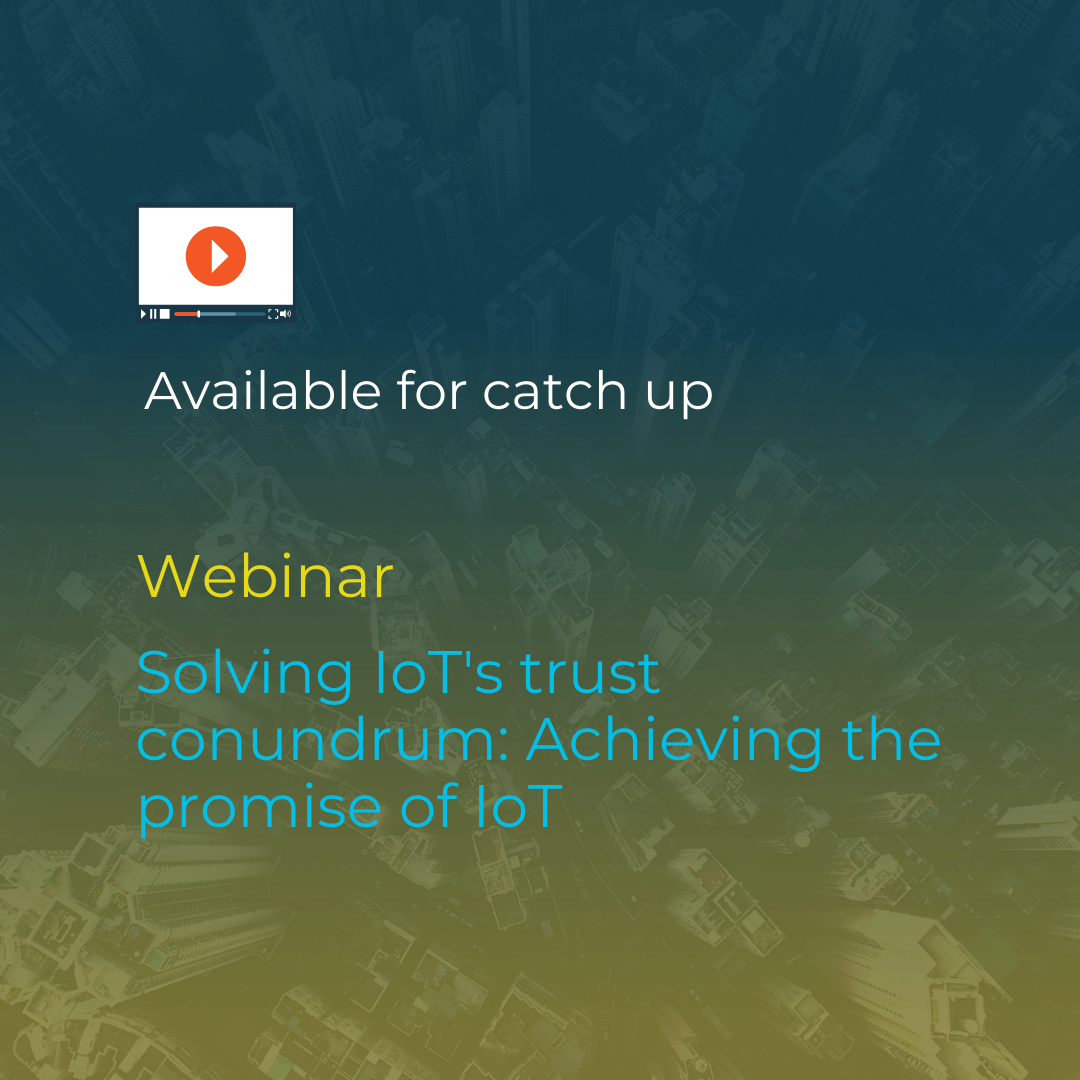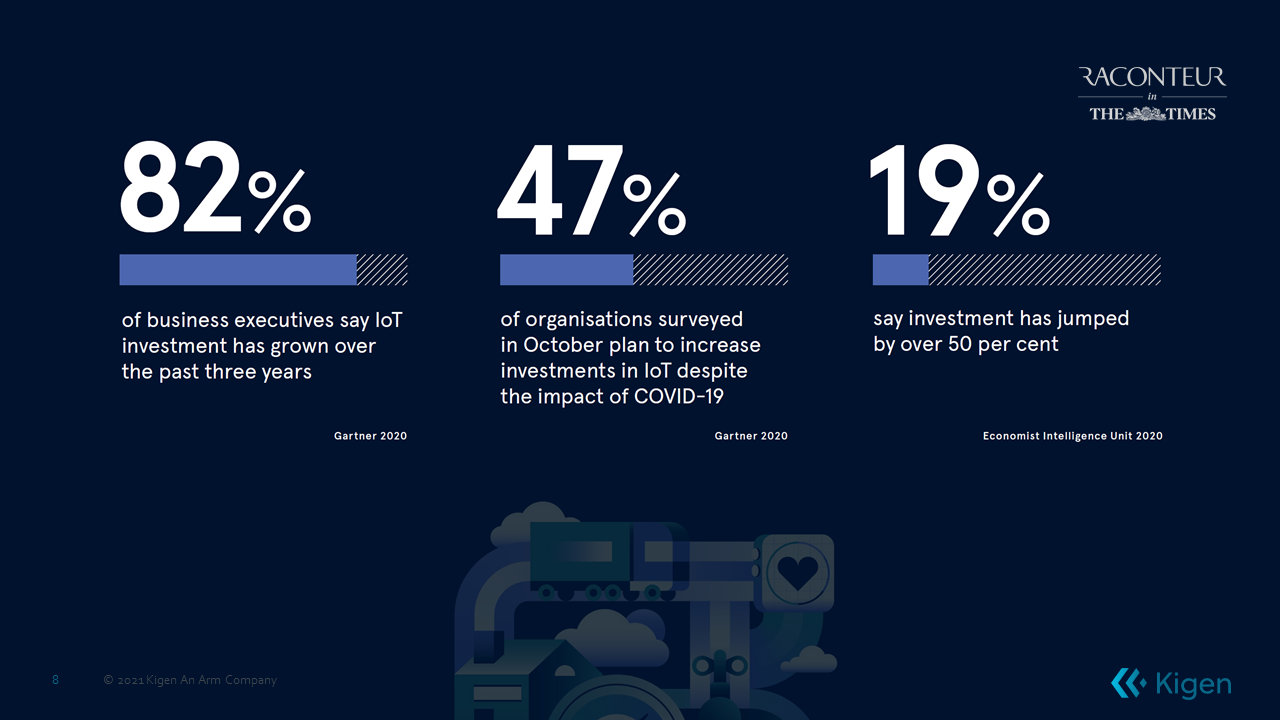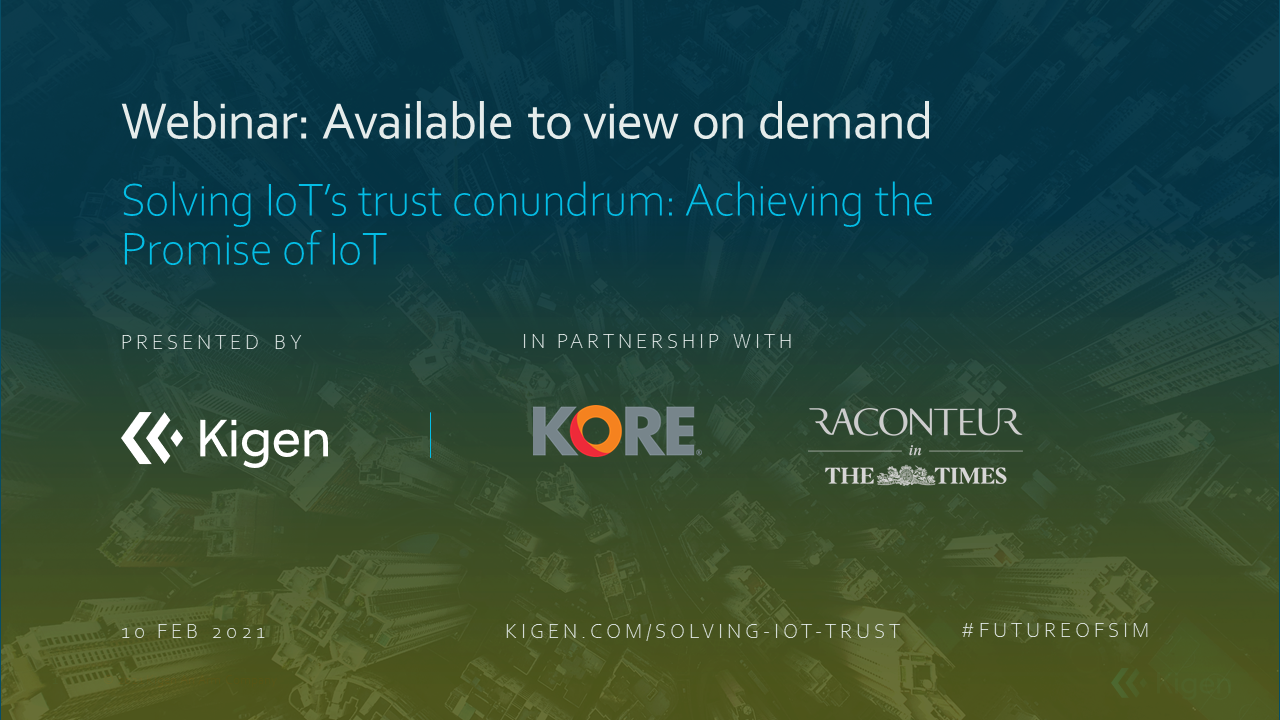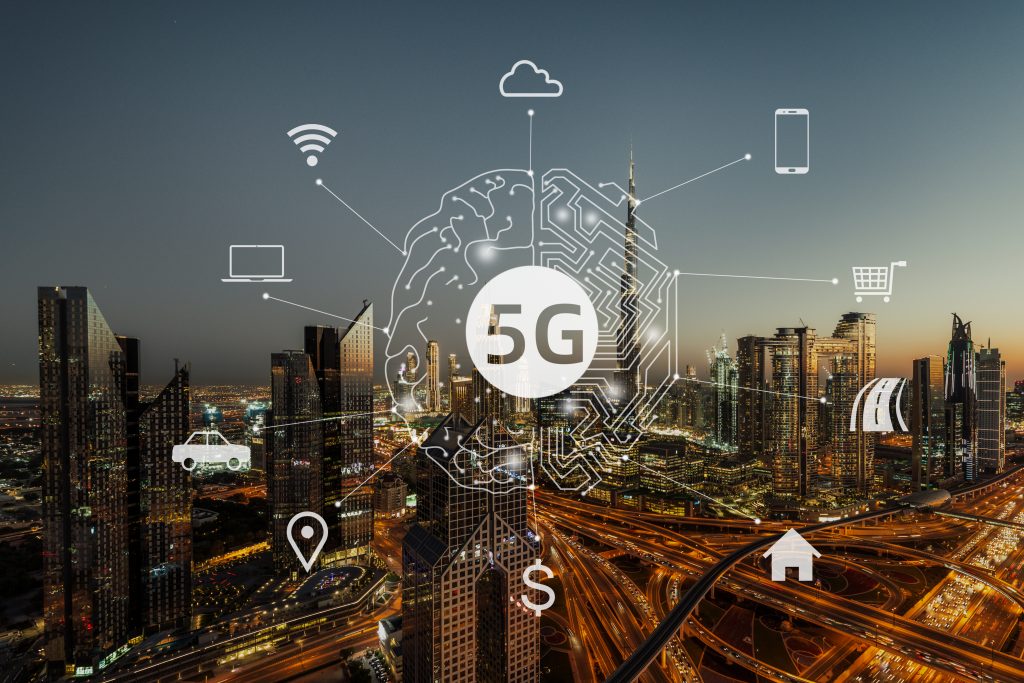
- Resources
- Blog
- Events
How vital are IoT trust and security for business growth in 2021?
With IoT investments ramping up, Kigen brought together business leaders to explore key challenges and share practical recommendations for successfully delivering digital transformation. A new era of IoT is emerging and technology is available to ease the journey to security and trust in connected devices.
Trust, security and simplicity are absolutely core to achieving the incredible promise of the internet of things (IoT) – and eSIM and iSIM technology are the powerful enablers. That was the key takeaway from an engaging webinar hosted by Kigen, the security leader for cellular IoT, in conjunction with its partner KORE on 10 February.



Nine weeks on from the publication of the IoT for Business report in The Times, Kigen invited KORE to examine the barriers to successful adoption of this crucial technology. The live session, which saw tech journalist Ben Rossi, an author of report, moderate discussion between Kigen and KORE’s respective CEOs, Vincent Korstanje and Romil Bahl, attracted leaders steering their own business through digital transformation.
IoT is the continuation of digital transformation out to the edge, Bahl began by explaining. Certain connectivity challenges have, however, prevented adoption from advancing as quickly as some companies would like. Despite IoT technologies improving and costs reducing, three out of five IoT proof-of-concepts (POCs) were failing in 2017, according to Cisco. The reason, Bahl noted, is because IoT has been far too complex.
Newsletter Sign-up// – Light Gray Inline
Sign-up for our newsletter to receive the latest from Kigen.
“The industry has not been kind to those wishing to adopt IoT and the onus was on the deploying company to put the pieces together” he said. “In my first few months with KORE, visiting our customers, I was scratching my head about why C-level execs would very quickly start talking about doing spectrum this and antenna that. They were spending so much of their brainpower on the LEGO bricks, not on the value proposition.”
“I realized we needed to simplify IoT. The fragmented ecosystem feeds into that, with a McKinsey study finding you need an average of 18 partners to launch one IoT solution. You’ll need to talk to 100 companies to get down to selecting 18 partners. That’s too far many. Organizations need a one-stop-shop across connectivity, solutions and analytics.”
The complexities, though frustrating, haven’t dampened interest in IoT. The IoT for Business report outlined research from Gartner last year showing 82% of businesses had increased their IoT investments and nearly half were committed to growing them further in 2021 even despite of challenging conditions caused by Covid-19. In many ways, in fact, the pandemic has proved to have an accelerating effect on IoT initiatives.



“Covid-19 thrusted businesses to digital modes of operations in a short time,” said Korstanje. “No matter what industry you are in today, connectivity is back on your list of business-critical considerations.” Particularly in areas like connected health, Bahl added, the pandemic has accelerated about ten years of progress in just ten months.
The benefits offered by IoT are wide-ranging, from cost savings to new levels of agility and efficiency, but it is ultimately data and analytics where its most transformative potential lies and which motivates most use cases. Yet while data is undoubtedly king, it is worthless if it is not trusted. This is where eSIM and iSIM take center stage; the well overdue successors to traditional SIM and the crucial foundation for secure cellular IoT.
“Security and trust need to be baked in from the origin,” Korstanje said. “To trust your edge data, cloud data or the service data, you need to be able to secure and trust your connected device. This is where eSIM and iSIM allow businesses to leverage what is really age-old trusted technology into smaller, cheaper and quickly scalable solutions.”
“An intensive activity across all types of vendors in our ecosystem has supported the GSMA’s standardization activity for eSIM and iSIM so that businesses don’t have to make this additional change and choice. They can use eSIM as it is best suited for their business and goals, and then leverage iSIM in the same way without having to redesign key data exchange flows. This way you can continue the work on building and scaling.”
Questions from the audience enriched the webinar discussion. After clarifying the trajectories the form factors are on – eSIM getting strong traction having been available for a few years now; iSIM in its earlier days but likely to be switched to in most use cases once it has matured – Korstanje fielded a question on how to approach security.
If the little data on each little device cannot be trusted, the big data never will be, he answered. When taking decisions on how to improve the performance of a system or a customer interaction, organizations need to know the data they’re collecting from IoT devices is verified and secure. And once they’re acting on that, if any automation steps are involved, they also need to be able to trust they are doing what they’re supposed to.
“The only way to trust information from IoT devices is to know nobody’s tampered with them,” Korstanje said. “We’ve all read about the high-profile cyberattacks, but just the fundamental fact of not being able to trust your data makes it effectively useless.
That starts with a device’s security. But even if the device is trusted, it can be corrupted on the way and someone can bring the network down with a DNS attack, so it is really important that every kink in the IoT security chain is effectively protected because if one is weak, it will break.
“Through all of the stages, from the small device to the big cloud, it’s vital to be secure. eSIM and iSIM make IoT secure by design, driving more use cases and making it easier for us all to work together. It’s going to be everywhere, not just in cellular connectivity. The key challenge is making sure wherever in the world a device goes, it just works seamlessly. That means companies need to partner and work together in an ecosystem.”
Vincent Korstanje, CEO of Kigen
Bahl added that KORE has “bet big” on eSIM and iSIM to help reduce IoT complexity. “A company wanting to deploy and ship connected washing machines to 50 countries will need two or three carriers per country to ensure good connectivity, which means up to 150 contracts with carriers and 150 SIM cards in their assembly line. That supply chain complexity and customer abrasion can be taken care of by applying eSIM, and the future is undoubtedly iSIM. Just the real estate benefit on these smaller devices alone is alone attractive. You have to be able to separate the secure element. It’s just a matter of time.
“If you’re not in the game, get in it because you’re starting to be really late. The first decade or so of IoT, when people were expecting many billions of devices, and it didn’t happen because of all of these complexities, is behind us now. The real decade of IoT, 2021 to 2030, is just beginning. If you’re one of those companies whose IoT POC failed, get back on the horse. It is vital that you drive your digital transformations to the edge.”
Romil Bahl, CEO and President of KORE Group
How are you factoring in the new age of IoT into your post-pandemic growth? Let us know what interested you in the webinar discussion, and how our teams at Kigen and KORE can help you achieve your unique growth? Drop us a line below or join the #futureofSIM conversation on LinkedIn.
Want to catch up again on some of these leadership insights?






